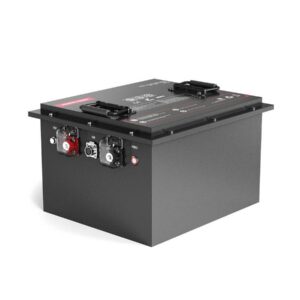
What is the difference between CR and SR batteries?
CR and SR batteries are both button cells but differ in chemistry and voltage. CR batteries use lithium manganese dioxide (3V), offering high energy density for long-term devices like key fobs. SR batteries rely on silver oxide (1.55V), providing stable voltage for precision devices like watches. Their applications, costs, and shelf lives vary significantly due to material and voltage constraints.
What Is the Best Battery for a Diesel Pickup Truck?
How do CR and SR batteries differ chemically?
CR batteries employ lithium manganese dioxide (Li-MnO₂), delivering 3V output. SR batteries use silver oxide (AgO) with zinc anodes, yielding 1.55V. Lithium enables CR cells to operate in extreme temperatures (-30°C to 70°C), while AgO ensures SRs maintain flat discharge curves until depletion.

Lithium’s high electrochemical potential drives CR’s 3V output—double SR’s 1.55V. This makes CRs ideal for power-hungry devices like GPS trackers, whereas SRs excel in precision instruments needing steady voltage, such as glucometers. Silver oxide’s low internal resistance allows SRs to handle pulse currents better, crucial for LED flashes. However, lithium’s lower self-discharge (2% annually vs. SR’s 5%) gives CRs a decade-long shelf life. Pro Tip: Never substitute CR for SR in medical devices—voltage mismatches can skew readings. Imagine powering a digital thermometer: an SR44 lasts 1 year with stable accuracy, while a CR2032 would fry its circuitry instantly.
What voltage characteristics define CR vs. SR?
CR batteries maintain 3V throughout 90% of discharge. SR batteries hold 1.55V until sudden drop-off. This makes SRs preferable for analog devices where voltage stability impacts accuracy, like analog watches.
CR’s lithium chemistry provides a gradual voltage decline from 3V to 2V, suitable for digital circuits with wide input ranges. Conversely, SRs stay at 1.55V ±2% until 95% depleted, then plummet—ideal for devices needing end-of-life alerts. For example, hearing aids using SR516 batteries maintain consistent volume until the last 5% capacity, signaling replacement time. Pro Tip: Use SR cells in vintage cameras; their stable voltage prevents light-meter drift. But what if you ignore voltage differences? A 3V CR2032 in a 1.5V SR41 slot could overheat motors in laser pointers.
| Parameter | CR | SR |
|---|---|---|
| Nominal Voltage | 3V | 1.55V |
| End Voltage | 2V | 1.2V |
| Voltage Stability | ±10% | ±2% |
Which applications favor CR over SR batteries?
CR batteries dominate in high-drain, temperature-variable applications like car key fobs. SR batteries shine in precision devices—watches, medical sensors—where voltage stability is non-negotiable.
CR’s 3V output powers memory backup (motherboard CMOS) and wireless sensors needing bursts of energy. SR’s 1.55V suits low-power, continuous-use devices: a Casio G-Shock watch runs 2 years on SR621SW versus 6 months with CR2016. However, lithium’s cold tolerance (-30°C) makes CRs essential for outdoor IoT sensors. Ever wonder why SR44s dominate hearing aids? Their steady voltage prevents audio distortion during gradual discharge. Pro Tip: Use SR in analog circuits (e.g., aquarium thermometers) to avoid recalibration hassles.
Are Duracell Car Batteries a Good Choice for Your Vehicle?
How do costs compare between CR and SR types?
SR batteries cost 2-3x more than CRs due to silver content. A CR2032 averages $0.50, while SR44 hits $1.20. Bulk purchasing reduces SR costs marginally, but AgO prices remain volatile.
Silver constitutes 35% of SR battery mass, tying costs to commodity markets. CRs use cheaper lithium but require airtight seals to prevent electrolyte leakage—adding $0.10/unit. For high-volume uses like TV remotes, CR2025’s $0.30 price outperforms SR’s premium. However, medical OEMs absorb SR costs for reliability: a $1.50 SR1130SW lasts 18 months in a heart rate monitor versus $0.40 LR44 (alkaline) failing in 6 months. Pro Tip: For non-critical devices, consider alkaline LRs—they mimic SR voltage at 1/3rd cost but suffer 30% shorter lifespan.
| Type | CR2032 | SR44 |
|---|---|---|
| Cost per Unit | $0.50 | $1.20 |
| Silver Content | 0g | 0.45g |
| Typical Lifespan | 5 years | 3 years |
What environmental factors distinguish CR and SR batteries?
SR batteries contain recyclable silver but require specialized processing. CR cells need lithium recovery systems, with only 5% recycled globally versus 60% for SRs in regulated markets.
Silver oxide batteries are classified as hazardous waste in the EU (EPA code D009) but have established recycling streams due to silver’s value. CRs, while non-toxic, accumulate in landfills—lithium can leach into groundwater. California’s SB-1215 mandates SR recycling, whereas CR disposal follows general e-waste rules. For instance, 1 ton of SR44s yields 300g silver, incentivizing recovery. Pro Tip: Return SRs to jewelers or pharmacies—many offer take-back programs. But what if you toss CRs? Over 10 years, 100 discarded CR2032s release 15g lithium, contaminating 10,000L water.
Battery Expert Insight
CR and SR batteries serve distinct roles dictated by voltage and chemistry. CR’s 3V lithium power suits high-drain, temperature-resilient applications, while SR’s silver oxide provides unparalleled voltage stability for precision devices. Always match battery chemistry to the device’s voltage tolerance—mismatches risk performance loss or critical failures in medical equipment.
FAQs
Can I replace SR44 with CR2032?
No—CR2032’s 3V exceeds SR44’s 1.55V, risking device damage. Use LR44 for temporary SR44 substitution with reduced lifespan.
Why are SR batteries more expensive?
Silver oxide costs 50x more than lithium by weight. Each SR44 contains $0.60 worth of silver, driving prices up.
Are CR batteries rechargeable?
No—standard CRs are primary cells. Rechargeable LIR2032 exists but outputs 3.6V, incompatible with most CR devices.
